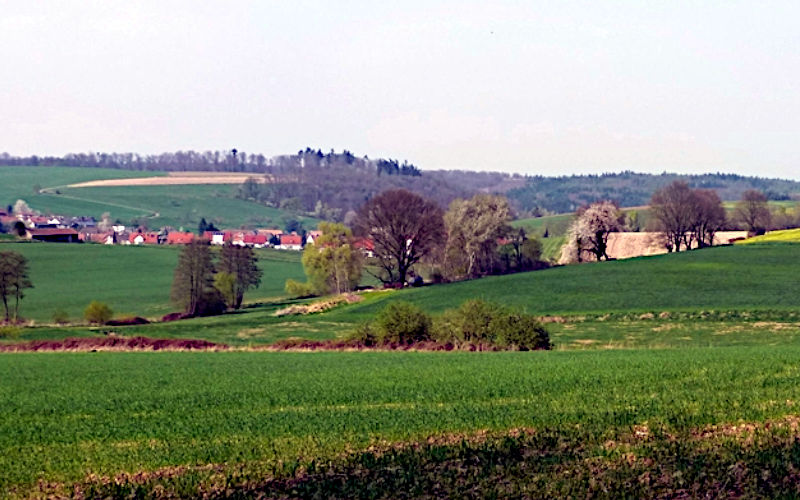Impact of Land Use on Stream Water Quality in the German Low Mountain Range Basin Gersprenz
DOI:
https://doi.org/10.3097/LO.201972Keywords:
land cover, land use, hydrological monitoring, water quality, electrical conductivityAbstract
Knowledge of the interactions of hydrological processes with the landscape are important to understand variations in basic hydrological data for the comprehensive management of basins. Land cover and land use is one essential factor in the assessment of such management problems. In this study in a representative German basin, available land cover and land use data is analysed in correspondence with available hydrological measuring data.
The aim of this study is to analyse the relationships between hydrological data and land use and to obtain a monitoring strategy which allows a valuable support to a comprehensive management of river basins.
Two spatial scales, the basin Gersprenz and its subbasin Fischbach, are described in detail regarding the variations in electrical conductivity (EC) as a parameter of water quality with high resolution field data from the state-wide monitoring network (12 stations) as well as from own research monitoring (12 stations). The results show that water quality, using EC as an indicator, can be related to land use pattern. From stream source to mouth, there is an increase in anthropogenic impacts and the EC values show an increasing tendency in downstream direction. This anthropogenic impact is due to agricultural use, settlements, commerce and industry areas, and discharges of waste water. The hydrological monitoring will be continued in the future to give the possibility to assess long-term variations on different spatial and temporal scales.
References
Chapman, D. 1996. Water Quality Assessments - A Guide to Use of Biota, Sediments and Water in Environmental Monitoring. UNESCO/WHO/UNEP. 651 p
Covarrubia, J. C.; Rayburg S.& Neave, M. 2016. The influence of local land use on the water quality of urban rivers. International Journal of GEOMATE 11(23): 2155-2161. Geotec., Const. Mat. & Env., ISSN: 2186-2982 (Print), 2186-2990 (Online), Japan.
Diamantini, E.; Lutz, S.R.; Mallucci, S.; Majone, B.; Merz, R. & Bellin A. 2018. Driver detection of water quality trends in three large European river basins. Science of the Total Environment 612, 49–62. DOI: 10.1016/j.scitotenv.2017.08.172. DOI: https://doi.org/10.1016/j.scitotenv.2017.08.172
EC 2000. Directive 2000/60/EC of the European Parliament and of the Council of 23 October 2000 establishing a framework for the Community action in the field of water policy. Official Journal of the European Communities L 327/1, Luxembourg.
Eiche, E.; Hochschild, M.; Haryono, E. & Neumann, T. 2016. Characterization of recharge and flow behaviour of different water sources in Gunung Kidul and its impact on water quality based on hydrochemical and physico-chemical monitoring. Appl Water Sci 6, 293–307. DOI: 10.1007/s13201-016-0426-z. DOI: https://doi.org/10.1007/s13201-016-0426-z
Fischbachtal 2017. Fischbach. http://fischbachtalodenwald.de/fischbachtal/fischbach (Date:15.12.2017).
Fučík, P.; Kvítek, T.; Lexa, M.; Novák, P.& Bílková, A. 2008. Assessing the Stream Water Quality Dynamics in Connection with Land Use in Agricultural Catchments of Different Scales. Soil & Water Res. 3(3), 98-112. DOI: https://doi.org/10.17221/19/2008-SWR
Ghorbani, M.A.; Aalami, M.T. & Naghipour, L. 2017. Use of artificial neural networks for electrical conductivity modeling in Asi River. Appl Water Sci 7, 1761–1772. DOI: 10.1007/s13201-015-0349-0. DOI: https://doi.org/10.1007/s13201-015-0349-0
Halstead, J.A.; Kliman, S.; White Berheide, C.; Chaucer, A. & Cock-Esteb, A. 2014. Urban stream syndrome in a small, lightly developed watershed: a statistical analysis of water chemistry parameters, land use patterns, and natural sources. Environ Monit Assess 186:3391–3414. DOI: 10.1007/s10661-014-3625-9. DOI: https://doi.org/10.1007/s10661-014-3625-9
HVBG 2017. ATKIS (Amtliches Topographisch-Kartographisches Informationssystem; Authorative Topographic-Cartographic Information System). Hessisches Landesamt für Bodenmanagement und Geoinformation, Wiesbaden.
Hietel, E.; Waldhardt, R. & Otte, A. 2004. Analysing land-cover changes in relation to environmental variables in Hesse, Germany. Landscape Ecology 19, 473–489. DOI: https://doi.org/10.1023/B:LAND.0000036138.82213.80
HLNUG 2017a. River discharge and water levels of all gauges in Hesse. Hessisches Landesamt für Naturschutz, Umwelt und Geologie. http://www.hlnug.de/static/pegel/wiskiweb2/ (Date:12.12.2017).
HLNUG 2017b. River – Biology. Hessisches Landesamt für Naturschutz, Umwelt und Geologie. http://www.hlnug.de/themen/wasser/fliessgewaesser/fliessgewaesser-biologie.html (Date: 12.12.2017).
HLNUG 2018a. Statewide water monitoring (chemical parameters) within the Gersprenz basin. Hessisches Landesamt für Naturschutz, Umwelt und Geologie https://www.hlnug.de/themen/wasser/fliessgewaesser/fliessgewaesser-chemie/standardparameter/landesweite-messungen.html (Date: 12.12.2017).
HLNUG 2018b. WRRL viewer. Hessisches Landesamt für Naturschutz, Umwelt und Geologie. Wiesbaden. http://wrrl.hessen.de/mapapps/ resources/apps/wrrl/index.html?lang=de (Date:06.04.2018).

Downloads
Published
How to Cite
Issue
Section
License
Copyright (c) 2019 Britta Schmalz, Marion Kruse

This work is licensed under a Creative Commons Attribution 4.0 International License.










